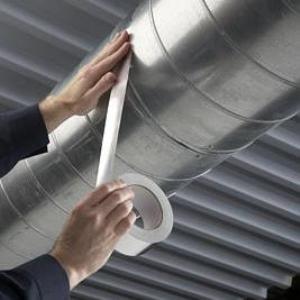
Moisture buildup in dryer vent
- Posted by admin
- On April 25, 2023
- 0 Comments
- dryer vent cleaning, dryer vent cleaning ottawa, high dryer vent cleaning
Moisture buildup in dryer vent is an important issue that can lead to water damage, mold growth and fire hazards if not properly addressed. As dryers run, they produce exhaust which contains water vapor that condenses inside the vent. This moisture accumulates over time, causing problems that require comprehensive dryer vent maintenance.
Water damage occurs as moisture leaks from vents and penetrates into outer walls, ceilings, attics and roofs. Wet insulation, drywall, wood and other materials can develop water stains, rot, peeling paint and structural problems. High moisture levels lead to mold growth, which produces mold spores that circulate in the air. Indoor mold is unhealthy and can trigger allergies, asthma and other respiratory issues.
Moisture buildup adds fuel to potential dryer fires by creating wet lint deposits that easily ignite. Lint is highly flammable, and combined with excess moisture from vent leaks, the risk of lint ignition and fire becomes extremely high. According to insurance claims, nearly 4000 dryer fires occur in the U.S. each year, with most caused by moisture-filled, clogged vents and lint accumulation.

Some tips to address moisture buildup in dryer vents include:
• Regular vent cleaning.
At least once per year, or more often for high-use dryers, vents should be professionally inspected and cleared of built-up lint and debris. Lint blockages provide more surface area for moisture to pool and become trapped. Cleaning removes lint and prevents further buildup.
• Inspect and seal any air leaks.
Look for any cracks, crevices or holes in vents where moisture could enter. Use high-temperature vent tape, caulk or weatherstripping to seal these openings and create a tight, continuous vent path. This helps moisture escape rather than penetrating into walls or attics.
• Ensure proper slope.
Dryer vents should slope slightly downwards towards the outside termination to allow moisture to drain. If a vent slopes upwards, pools of water will form. Vents that sag or have dips can also trap moisture. Ensure a dryer is level for better vent function.
• Increase vent diameter. For high-capacity, high-efficiency dryers, increasing vent diameter provides lower restrictions and better airflow. This helps moisture evacuate more effectively rather than pooling in the vent. Large diameter vent kits are available for easier upgrades.
• Install insulated vents. Metal dryer vents conduct heat and cold, allowing exhaust heat and moisture to be lost or drawn into surrounding areas. Insulated aluminum or plastic vents provide better insulation for energy efficiency and moisture containment. They deliver more heat to the outside exhaust, rather than losing it to walls or the attic.
• Consider a ventless or condensing dryer. If excessive moisture from a standard vented dryer continues to be an ongoing problem, a ventless or high-efficiency condensing dryer could be a good solution. These more advanced dryers do not require venting, eliminating the issues that come with it. They are a more permanent solution but tend to be more expensive.



0 Comments